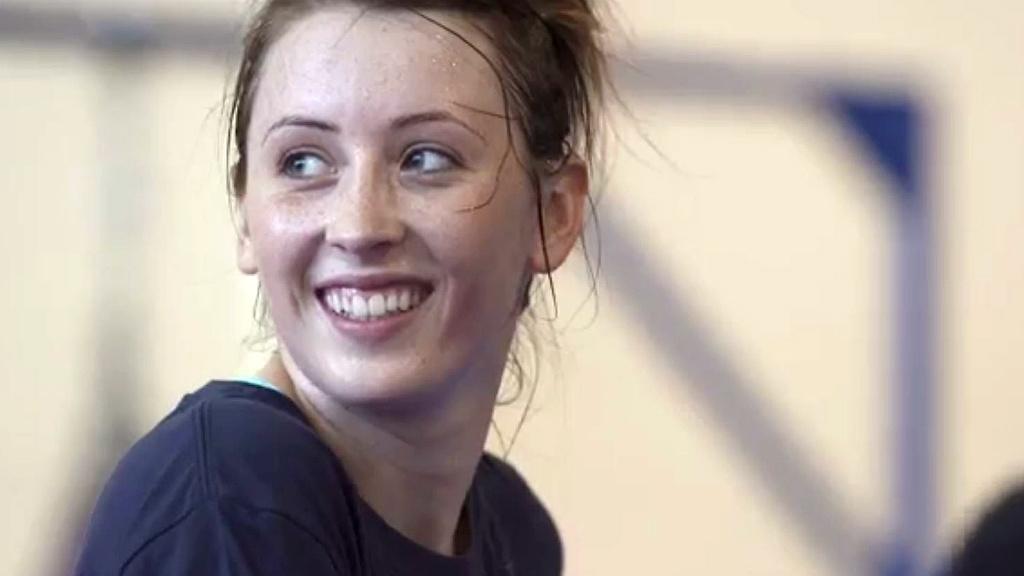Get Inspired: How to get into Taekwondo
- Published
'You don't have to be fastest or strongest'
Given that 'tae' means "to kick or smash with the foot" and 'kwon' means "to destroy with the fist", it is clear taekwondo is not for the faint-hearted.
Taekwondo's physical aspect doesn't deter more than 60 million people worldwide from enjoying the sport and its popularity led to it becoming an official Olympic event at the 2000 Games.
Britain had to wait until 2008 for its first official taekwondo medal, courtesy of then-world champion Sarah Stevenson, who clinched bronze. Jade Jones maintained that momentum when she won gold for GB at London 2012.
With its roots in ancient Korean martial arts, it is not surprising that Korea tops the Olympic medal list. But the fact that medals have also gone to Australia, Iran, Greece, Cuba, Afghanistan and the USA demonstrates the sport's global appeal.
Taekwondo explained (Part one)
Why is it good for you?
Taekwondo burns approximately 730 calories per session and helps improve fitness levels, balance, coordination and flexibility. For those not wanting to take part in combat, the moves involved in the sport can still be done as conditioning and strength-building exercises.
The moves involved in taekwondo often require your arms and legs to work together in unison, while using a number of different muscle groups at the same time. For example, upright kicking moves require flexibility in the legs, plus core and spinal strength.
The strikes and evasive manoeuvres involved provide an effective form of self-defence training. It also lowers peoples risk of sustaining serious injury in other sports as taekwondo teaches people how to fall in a safe manner.
Although it is an individual sport, taekwondo is an excellent way to develop communication skills and learn to work effectively with other people as you train in groups. Clubs also offer a variety of social events beyond simply playing the sport.
Taekwondo is good for the mind as well as the body. Specific rules ensure you will build self-confidence, self-discipline and respect for yourself and others.
Get involved
Taekwondo, external is a fun and challenging activity, enjoyed by approximately 50,000 people of all ages and abilities in the United Kingdom.
There are several ways to get involved in taekwondo beyond the sparring sessions on show at the Olympics. Poomsae, external is a non-combat version whereby a taekwondo instructor runs people through a sequence of moves and attacks.
Self-defence lessons, external are taught using taekwondo-based techniques, as well as breaking competitions where athletes demonstrate their power, speed and technique by shattering wooden boards or bricks.
It is vital that taekwondo sessions are overseen by a qualified instructor to ensure the correct techniques are taught, and guarantee safety. The best way to do this is to join your local club.
Information about where you can locate your nearest club can be found on the British Taekwondo, , externalTaekwondo Association of Northern Ireland, , externalTaekwondo Scotland, external and Taekwondo Cymru, external websites.
For those beginning sparring sessions, you must buy your own gum shield. Clubs can also offer the hire of head protectors, groin guards, shin guards, forearm guards and hand protectors in the early stages before you can decide whether to buy your own.
Every new skill and technique you learn contributes to your grading. As you progress, you will be given a new coloured belt to denote the rank ('geup'), external you have reached.
History
Taekwondo is a traditional Korean martial art dating back to 50BC. It began as a defence-based martial art called "subak" or "taekkyon," and developed as a way of training under the name of "sunbae."
In the middle ages, the practice of martial arts were restricted to just the military and people in Korea began to lose interest in the discipline.
The situation changed during the Japanese occupation from 1910-1945 where all traditional Korean sports and martial arts were banned.
The Korean martial art 'soobakgi' was practiced in secret, while Japanese martial arts such as karate, judo, kendo and aikido were taught in schools.
This sparked a revival in the martial arts in Korea and the different disciplines of Korean martial arts were unified under the name, taekwondo in April 1955.
In 1962, the Korean Amateur Sports Association recognized the Korean Taekwondo Union, which later became known as the Korean Taekwondo Association (KTA).
The World Taekwondo Federation was founded in 1973 and the first world championships were held in Seoul that year.
It made its debut as a demonstration Olympic sport at the 1988 Seoul Games and, at Barcelona in 1992, Great Britain's Jane Broadbent won an (unofficial) Olympic bronze.
More on the IOC website, external
Are you inspired to try Taekwondo? Or maybe you are a keen enthusiast already? Get in touch and tell us your experience of the activity by tweeting us on @bbcgetinspired, external or email us on getinspired@bbc.co.uk., external
See our full list of activity guides for more inspiration.
- Published20 May 2016
